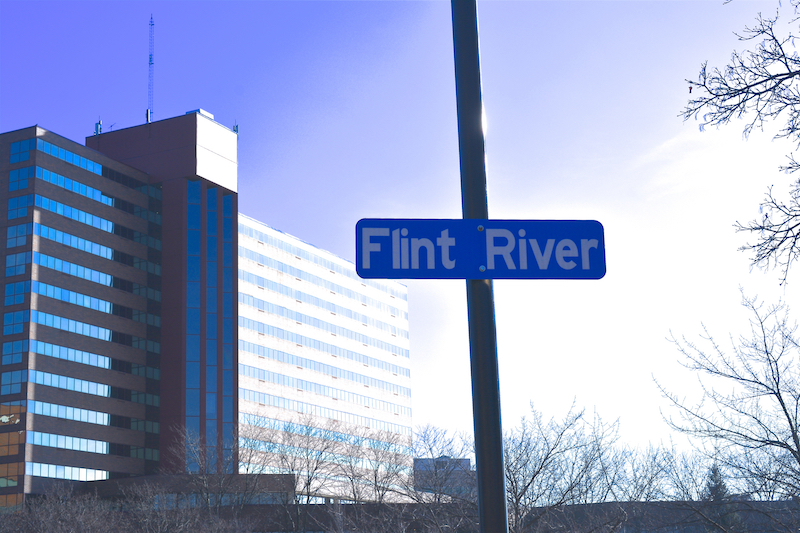Flint Water Crisis
Lately, I see less and less coverage of Flint in the national headlines. Some major news outlets haven’t even updated their Flint Water Crisis Timelines since the middle of 2016. This weighs on me.
If my two boys–9 and 6–had grown up just 90 miles from where they’re being raised, right here in the very same state of Michigan, their lives would’ve taken a tragic turn.
I can’t imagine how Flint’s mothers and fathers feel as doctors confirm their children are victims of lead poisoning. Or how they grapple with the suspicion that the rest of the country has mostly forgotten about their plight.
It’s Been 1,500+ Days
In February of 2017, I spent the 1,000th day of the Flint Water crisis with 3 of the city’s leading water activists: Mom and advocate Melissa Mays, Engineering Professor Dr. Laura Sullivan, and Community Organizer Naayirah Shariff. [To read the Huffington Post pieces I wrote about these women, click on their names.]
And as you continue to scroll through the information below, please keep in mind that by mid 2018, the crisis has now stretched out for nearly 1,500 days. And it’s not over yet.
Some History
The midwest used to be called “the heartland” because its booming industry towns helped the whole country flourish. But over time–as factories closed across the state–people adapted the term heartland to describe the slow, close knit lifestyle that played out in small towns and farms scattered across these states.
The auto industry–which many Michigan residents had staked their livelihoods in–was downsized and outsourced. And it wasn’t just Detroit that suffered. It was a whole list of manufacturing towns–big and small–whose primary source of revenue was supplying the auto industry with parts.
Flint was no exception. Its roots were intertwined with those of the auto industry. Chevy and General Motors set up shop there and Flint residents with little experience were trained to work in the plants. There was good money to be made. In fact, by the 1960’s, the city population reached nearly 200,000 people–85,000 of which were employed by GM. In it’s heyday, this very same Flint was a boom town.
Flint Today
As a result of these changes, the city of Flint inarguably hit hard times. Plant closures in the 1990’s and 2000’s pushed unemployment rates up and prompted thousands to move out of the city, looking for work elsewhere. They left abandoned properties in their wake and these empty buildings and unkept lots quickly lowered the value of all property in Flint. Over time, the city began repeatedly ranking among the most dangerous cities in the United States.
By 2013, Flint’s population had been cut in half with just 99,000 remaining residents.
Today, so many people have fled Flint, the city ranks second for most “vacant houses” behind only Detroit. This is why the city’s “blight elimination plan” now calls for boarding up 4,235 vacant structures. This is 1 out of every 9 houses in Flint. They also plan to demolish 5,028 residential structures (i.e. 1 out of every 8 houses) and 432 commercial structures (1 of every 6 buildings used for business).
Some residents believe the reason public officials didn’t fix the city’s now famous contaminated water supply more quickly is because the city is in such decline. They suspect lawmakers would like to see the city dwindle down and become gentrified–slowly emptying out and being renovated to conform to middle class tastes.
But as I walk the streets of Flint, there are lots of homegrown residents who insist they aren’t going anywhere. They’re still living in Flint and working hard to raise their voices as they face a water crisis you’d normally read about in headlines about developing countries.
The Water Crisis
To fully understand how the crisis around water began, you have to do a bit of reading. But here are the cliff notes:
A state-appointed emergency manager took over the administration of the struggling city. And to save money, this manager switched from the Detroit water supply (Lake Huron), and began drawing their water from the Flint River.
Unfortunately, through some mix of neglect, ignorance, and passing-the-buck, the Flint River water wasn’t properly treated before it was funneled into homes. The result? It corroded old lead pipes all over the city, contaminating the water with poisonous levels of lead.
After Flint residents began reporting water-related illnesses, the city began dumping in chemicals to treat the contaminated water. Unfortunately, this caused more problems than solutions.
Paying for Poisoned Water
Perhaps one of the greatest ironies in the Flint Water Crisis is that through much of the emergency, Flint residents were still paying the highest water bills in the country. And we’re not just talking about a few percentage points. They were paying double the national average.
And if they refused to pay for the contaminated water? They were threatened with shut offs, which some residents say can lead to the city condemning a house and reporting parents to family social services. While the city says there’s no instances of children removed over Water Crisis issues, one can see how residents might feel stuck in an impossible position. Appendix 2, Section 1 of MDHHS’ own “Mandated Reporters’ Resource Guide” lists “running water in the home” as a potential sign of neglect.
The Problem Isn’t Over
One of the most tragic and frustrating pieces for the people of Flint is that many people in the rest of America think Flint’s problems have been solved.
When outsiders learn Flint residents are living off bottled water, it may not sound like an “emergency.” With some extra hustle and expense, they imagine, most of us could get by on bottled water for a few days…or even a few months. But when this sort of hardship lasts 1,500 days, the reality is it’s literally life altering.
1,000+ days into this crisis, the people of Flint were still traveling across town to pick up water so they could safely cook and drink. This burden was increased, activists say, by their estimate that roughly 20% of residents don’t have reliable transportation. The hardship is also multiplied for residents who are elderly, sick, pregnant, or caring for little ones. These groups, of course, need water just the same (maybe more), but lugging around 26.5 pound cases of it–whether driving, walking, or taking the bus–is no easy task. Especially almost 1,500 days later.
Complicating matters more, on April 10, 2018 the city moved to close free water distribution sites –a slap in the face to Flint residents who are still waiting for lead lines and service lines to be replaced. In response, Flint residents began protesting and Flint’s mayor has requested a meeting with Gov.Snyder. State Rep. Sheldon Neeley, D-Flint, issued a statement saying,”The abruptness of these closures is irresponsible, cruel, and further calls into question the very humanity of the Snyder administration.”
On April 11, Snyder agreed to hold a meeting to discuss the issue.
Health Issues
In addition to difficulty accessing clean, affordable water, new patterns of illness are emerging across Flint–the most extreme of which is an outbreak of Legionnaires’ disease. There have been 87 cases and at least 10 deaths related to Leionnaires.
Other common side effects include severe eczema like rashes, peeling skin, hair loss, anemia, memory loss, brain fog, and fatigue. On a recent visit to Flint, more than one resident told me they had unexplainably begun to have seizures.
And this isn’t just hearsay. Along the way, the state itself issued a notice acknowledging the water contained unlawful levels of trihalomethanes, a chlorine byproduct linked to cancer and other diseases.
And the claim that health issues are linked to the contaminated water supply is one well supported by doctors. Medical professionals have publicly advocated for the people of Flint, warning the long-term effects of lead exposure can’t be reversed. Instead, doctors caution that children exposed to lead will carry side effects with them for life.
As you can imagine, hearing doctors confirm their children will pay life long costs is traumatizing to Flint residents. Everyone I spoke to talked about new levels of stress, worry, and paranoia. Many voice fears about how their families have been harmed, what medical issues will befall them in the future, and how they will pay for any necessary medical treatment. (Read more about health issues here and here.)
Mothers report being riddled with guilt. Take LeeAnne Walters for example. What must it have been like for her when she learned that the maximum concentration of lead allowed by law is 15 parts per billion, yet the water at her house tested at nearly 400 parts per billion?
“I was hysterical,” Walters told Mother Jones. “At first, it was self-blame. And then there’s that anger: How are they letting them do this?”
Or consider the worries of another mother, Nicole Lewis, who told The New York Times she can’t sleep. “I’m up until midnight some nights because I can’t shut down,” she said. “Just thinking about my life in general — like really, did I deserve this? Did my kids deserve this?”
This crisis has taken its toll on both Flint’s physical, emotional, and psychological health.
But on April 12, 2018, a bright spot emerged when a federal judge approved historic measures to support the children of Flint.
Trust Issues
Residents’ fears are only compounded by a history of neglect on the part of the city and public agencies. Three times–in August and September of 2014–for instance, the city released advisories instructing residents to boil the water. But this was the exact opposite of what they should’ve done. Boiling water with lead in it actually concentrates it, making it more dangerous to drink. (Read more about that here.)
In January of 2015, the city notified residents the water contained byproducts of disinfectants known to increase one’s risk for cancer over time. But, the city said the water was safe for the general population outside of the elderly or young children. They were wrong about that too.
Then to make matters worse, in March of 2015, when the Flint City Council tried to do reconnect to Detroit’s safer water supply, state-appointed emergency manager Jerry Ambrose overruled them, effectively locking them into the bad water.
By January of 2016, the EPA was criticizing the state’s slow response to the water problems. And by February, the US Attorney’s Office was investigating. Since then, State Attorney General Bill Schuette has filed 43 criminal charges against 13 current and former state and local workers. The State Attorney General also stood against Michigan Governor Rick Snyder on the issue, even though the two men were from the same party.
Federal U.S. District Judge David Lawson then ordered the state and the City of Flint to make regular bottled-water deliveries to all Flint residents who are not proven to have properly installed and maintained water filters. In response, Gov. Snyder and the state appealed the order twice, arguing water delivery wasn’t necessary and would be too costly. They lost both appeals and were forced into making water available for a time. But then, on April 10, 2018, they announced the water distribution efforts were ending.
Add to this, that back in May of 16, Snyder authorized $1.2 million of taxpayer dollars to be used for civil and criminal defense attorneys to protect himself from potential water-related lawsuits. Since then, he’s increased the funding for criminal defense lawyers to close to $5 million.
The Future of Flint
While some reports suggest the lead and bacteria levels in the water are finally falling, it takes consistent samples drawn over time to be sure the water is really clean. In the meantime, this is the bleak forecast the city gave Flint residents in January, 2017:
At that point, they estimated it would take roughly 3 more years for Flint to replace lead water service lines throughout the city. The money to make that happen has not been secured. (The city’s treatment plants needs well over $100 million in upgrades and won’t likely be ready to handle water from the new Karegnondi Water Authority until late-2019- early 2020.) Some residents who pushed back on this announcement were arrested at this meeting. You can read a piece I wrote for Huffington Post on that here.
Come late 2018, $34.5 million in legal fees later, artificial intelligence was brought to Flint and is being used to try to calculate the breadth of the problem. Meanwhile, top officials are still being prosecuted in court–this time for manslaughter.
Since I first began writing about the Flint Water Crisis, many good things have happened to bring attention to the ongoing needs of Flint’s residents. Mona Hanna-Attisha, the pediatrician who broke the health crisis open, has written a book entitled What the Eyes Don’t See. Miss Michigan chose to advocate for Flint at the Miss America Pageant. Even Michael Moore made a movie in which an official claimed Flint falsified records about lead poisoning in kids.
Yet, Justice for Flint is not yet complete.
For the most recent news on the ongoing Flint Water Crisis, click here. Or, to see video footage of firsthand accounts from the crisis, try these.








